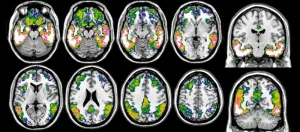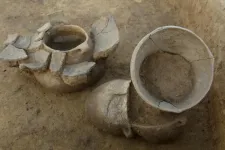(Press-News.org) Conditions are ripe for an accelerated transition to electric vehicle (EV) use in the United States. The Biden-Harris administration has set a target that 50 percent of newly purchased cars in 2030 be electric. In addition, the Inflation Reduction Act of 2022 provides significant tax incentives for purchasing electric vehicles and for companies that produce them.
And that is good news for environmental justice (EJ), says Lisa Benjamin, author of a paper called “EVs as EJ?” forthcoming in Harvard Environment Law Review. Benjamin, associate professor of law at Lewis & Clark Law School, details all of the positive impacts of EVs on environmental justice pursuits. But she also outlines the potential harm that could be done to Native communities without updated mining regulations and greater inclusion in land-use decision-making.
The reason? The increase in electric vehicle production is being accompanied by an increase in domestic mining for the minerals included in EV batteries. Many of these minerals, such as lithium and cobalt, are located in or near tribal lands, including sacred and culturally important sites.
EVs and Environmental Justice
Widespread adoption of EVs is critical to reducing carbon and other greenhouse gas emissions, a key driver of climate change. The transportation sector is the largest source of U.S. carbon emissions. According to the United Nations’ Intergovernmental Panel on Climate Change (IPCC), a 50 percent reduction in carbon must be achieved by 2050—and as much as a 91 percent decrease by 2100—to stay within the globally accepted goal of limiting the planet’s warming to 1.5 degrees Celsius. The rapid adoption of electric vehicles is poised to play a major role in this reduction.
As Benjamin explains, a reduction in gas-powered cars will be especially beneficial to communities of color and/or low-income communities who have been disproportionately harmed by environmental burdens.
“Because of discriminatory policies, highways were built near and through Black and brown communities, making these communities much more vulnerable to chronic illnesses like heart disease and diabetes through exposure to air pollution,” says Benjamin, whose work focuses on climate justice and climate risk as well as how these issues intersect with energy law and administrative law.
In addition, says Benjamin, cost barriers and the lack of availability of charging stations and other infrastructure are preventing wider adoption of EVs by lower-income families.
“EVs are not affordable, and they have to be more affordable if we are going to provide economic justice for communities who have been discriminated against,” says Benjamin.
Key Minerals Near Tribal Lands
Despite all of the ways that greater adoption of electric vehicle use is making a positive difference, there are potential negative impacts.
According to a White House fact sheet, the clean energy transition is expected to drive up global demand for key minerals essential for EV batteries, such as lithium, graphite, cobalt, and nickel by 400 to 600 percent.
“Imperial Valley in California has one of the largest deposits of lithium in the world. There are also deposits in Oregon, Nevada, North Dakota, Tennessee, and Arkansas. The vast majority of nickel, copper, and lithium are located within 35 miles of Indian reservations. …” writes Benjamin.
“The deposits happen to be either in or really near tribal lands from reservations,” says Benjamin.
Stronger Regulations Needed
In order to prevent further harm to Native communities, Benjamin urges the Bureau of Land Management to adopt stricter requirements prohibiting mining not only at sacred sites on reservations but also in any adjacent areas deemed culturally important. One area of focus is an update to the 1872 General Mining Act which, writes Benjamin, was “passed during a period of exploration and exploitation of the American West.”
“If the regulations are reimplemented, or redrafted, that could lead to more consultation with tribes,” says Benjamin. “This is especially important in areas that may be off-reservation but still of cultural importance to tribal communities to ensure that their interests are fully taken into account when people mine for those materials.”
Benjamin also recommends that the Bureau of Land Management strengthen their process for including Native communities in the agency’s decision-making procedures.
While Professor Benjamin acknowledges that the transition to greater electric vehicle use is important for achieving climate and environmental justice goals for a number of disadvantaged communities, she says it’s important to ask: “How do we make sure that the transition not only provides benefits for these communities but also does not further disadvantage them?”
END
Electric car revolution puts Native communities at risk
New research from Associate Professor of Law Lisa Benjamin explores the positive environmental justice impacts of electric vehicles while urging updates to land-use and mining regulations to protect Native communities
2023-08-09
ELSE PRESS RELEASES FROM THIS DATE:
Tau-PET : a window into the future of Alzheimer’s patients
2023-08-09
Alzheimer’s disease, one of the most common neurodegenerative diseases, leads to progressive loss of memory and autonomy. It is characterised by the accumulation of neurotoxic proteins in the brain, namely amyloid plaques and tau tangles. Due to the silent development of pathology over decades, very early diagnosis is of utmost importance to be able to take action as early as possible in the disease process. A team from the University of Geneva (UNIGE) and the Geneva University Hospitals (HUG) has demonstrated ...
New research links early Europeans’ cultural and genetic development over several thousand years
2023-08-09
A new DNA study has nuanced the picture of how different groups intermingled during the European Stone Age, but also how certain groups of people were actually isolated. The study was carried out by researchers at Uppsala University working with an international team of researchers, who produced new genetic data from 56 Central and Eastern European individuals from the Stone Age. The results have been published in the journal Communications Biology.
“Conducting studies like this one requires a broad interdisciplinary discussion. In this study, this discussion has been exceptionally fruitful,” says Tiina Mattila, population geneticist at Uppsala ...
Natural gas odorants associated with consistent pattern of adverse health symptoms
2023-08-09
Odorants are widely used in natural gas for leak detection, however, few studies have examined their potential effects on public health. A new peer-reviewed publication in Current Environmental Health Reports, suggests that some commonly-used natural gas odorants may induce a range of adverse health symptoms at very low concentrations, ranging from headaches to respiratory inflammation and skin rashes.
“Our sense of smell is the first line of defense in detecting gas leaks, but few studies have examined how odorants in gas may adversely affect our health or well-being,” said the review’s lead author, PSE Healthy Energy Senior Scientist Drew Michanowicz. “The ...
Particulate air pollution a growing risk for premature CVD death and disability worldwide
2023-08-09
Research Highlights:
Between 1990 and 2019, the total annual number of premature CVD deaths and years of disability attributable to particulate matter air pollution rose by 31% worldwide.
The increase in deaths was unevenly distributed by sex, with a 43% increase in deaths among men compared to a 28.2% increase among women.
During the nearly 30 years of data reviewed, deaths and disability attributed to outdoor particulate matter pollution rose, while deaths associated with indoor use of solid fuels declined.
Regions ...
Over one million acres of tribal land submerged by dams in the US
2023-08-09
Dam constructions have flooded over 1.13 million acres of tribal land in the US contributing to the historic and ongoing struggle against land dispossession for Indigenous peoples in the United States. New research, published in Environmental Research Letters, has identified that a region of tribal land larger than the state of Rhode Island has been submerged by dams in the US. The findings raise concerns about the destruction of ecosystems, cultural heritage, and livelihoods.
The new study shows that dams have significantly contributed to land loss of Native people, a factor that ...
Does access to assisted suicide affect trends of conventional suicide among patients with cancer?
2023-08-09
An analysis published in Cancer Medicine reveals the trends of self-initiated deaths—including assisted suicide (AS) and conventional suicide (CS)—in Switzerland over a 20-year period, focusing on people who suffered from cancer. Although supporters of assisted dying state that access to AS should lead to a reduction in violent CS, the study’s findings do not confirm this assumption. The situations and motivations for cancer-associated CS seem to be clearly different from those for cancer-related AS.
In Switzerland, assisting in a suicide is not punishable as long as it does not serve selfish motives. ...
Researchers identify protein that may help protect against osteoporosis
2023-08-09
New research published in The FASEB Journal indicates that increasing the expression of a particular gene may help to prevent bone loss associated with postmenopausal osteoporosis.
For the study, investigators examined which genes are involved in turning precursor cells called bone marrow–derived mesenchymal stem cells (BMSCs) into cells that play a crucial role in bone formation. The screen identified a gene that encodes high mobility group AT-hook 1 (Hmga1), a protein that controls the expression of a variety of other genes.
In experiments conducted in rats, expression of Hmga1 increased during bone formation but decreased when rats’ ovaries were removed ...
Tool predicts a patient’s risk of developing psoriatic arthritis
2023-08-09
In research published in Arthritis & Rheumatology, investigators developed and validated a tool called PRESTO that identifies patients with psoriasis who face an elevated risk for developing psoriatic arthritis and may therefore benefit from preventive therapies.
Among 635 patients with psoriasis followed in the University of Toronto psoriasis cohort, 51 and 71 developed psoriatic arthritis during 1-year and 5-year follow-up periods, respectively. The risk of developing psoriatic arthritis within 1 year was higher in patients with younger age; male sex; family history of psoriasis; back stiffness; nail pitting (dents, ...
Loss of a particular protein causes growth defects in mice and humans
2023-08-09
Through next-generation sequencing, investigators have identified a mutation in the TMCO3 gene in two sisters with short stature.
The research, which is published in the Journal of Bone and Mineral Research, also revealed that the TMCO3 protein is expressed by chondrocytes, cells responsible for bone growth, and that it regulates expression of two other proteins known to control bone growth (parathyroid hormone-related protein and Indian hedgehog). TMCO3 appears to transport protons in exchange for potassium across a protein packaging organelle within cells.
The scientists confirmed that the mutation in TMCO3 was responsible for the sisters’ ...
Huge tipping events dominated the evolution of the climate system
2023-08-09
An analysis of the hierarchy of tipping points suggests that during the last 66 million years two events set the scene for further climate tipping and for the evolution of the climate system in particular. If the anthropogenic climate change of today leads to complete deglaciation, the evolution of Earth's climate will be influenced on a geological time scale, the authors suggest. The work by Denis-Didier Rousseau, Université Montpellier, France, Witold Bagniewski, Ecole Normale Supérieure, Paris, France, and Valerio Lucarini, University of Reading, UK is published in Scientific Reports and is part of the European TiPES project on tipping points ...
LAST 30 PRESS RELEASES:
Orthopedics can play critical role in identifying intimate partner violence
Worms as particle sweepers
Second spider-parasitic mite described in Brazil
January 2026 issues of APA journals feature new research on autism, pediatric anxiety, psychedelic therapy, suicide prevention and more
Private equity acquired more than 500 autism centers over the past decade, new study shows
New cervical cancer screening guidelines from the US Department of Health and Human Services
Estimated burden of COVID-19 illnesses, medical visits, hospitalizations, and deaths in the US from October 2022 to September 2024
Smartphone use during school hours by US youth
Food insecurity and adverse social conditions tied to increased risk of long COVID in children
Earliest, hottest galaxy cluster gas on record could change our cosmological models
Greenland’s Prudhoe Dome ice cap was completely gone only 7,000 years ago, first GreenDrill study finds
Scientific validity of blue zones longevity research confirmed
Injectable breast ‘implant’ offers alternative to traditional surgeries
Neuroscientists devise formulas to measure multilingualism
New prostate cancer trial seeks to reduce toxicity without sacrificing efficacy
Geometry shapes life
A CRISPR screen reveals many previously unrecognized genes required for brain development and a new neurodevelopmental disorder
Hot flush treatment has anti-breast cancer activity, study finds
Securing AI systems against growing cybersecurity threats
Longest observation of an active solar region
Why nail-biting, procrastination and other self-sabotaging behaviors are rooted in survival instincts
Regional variations in mechanical properties of porcine leptomeninges
Artificial empathy in therapy and healthcare: advancements in interpersonal interaction technologies
Why some brains switch gears more efficiently than others
UVA’s Jundong Li wins ICDM’S 2025 Tao Li Award for data mining, machine learning
UVA’s low-power, high-performance computer power player Mircea Stan earns National Academy of Inventors fellowship
Not playing by the rules: USU researcher explores filamentous algae dynamics in rivers
Do our body clocks influence our risk of dementia?
Anthropologists offer new evidence of bipedalism in long-debated fossil discovery
Safer receipt paper from wood
[Press-News.org] Electric car revolution puts Native communities at riskNew research from Associate Professor of Law Lisa Benjamin explores the positive environmental justice impacts of electric vehicles while urging updates to land-use and mining regulations to protect Native communities



